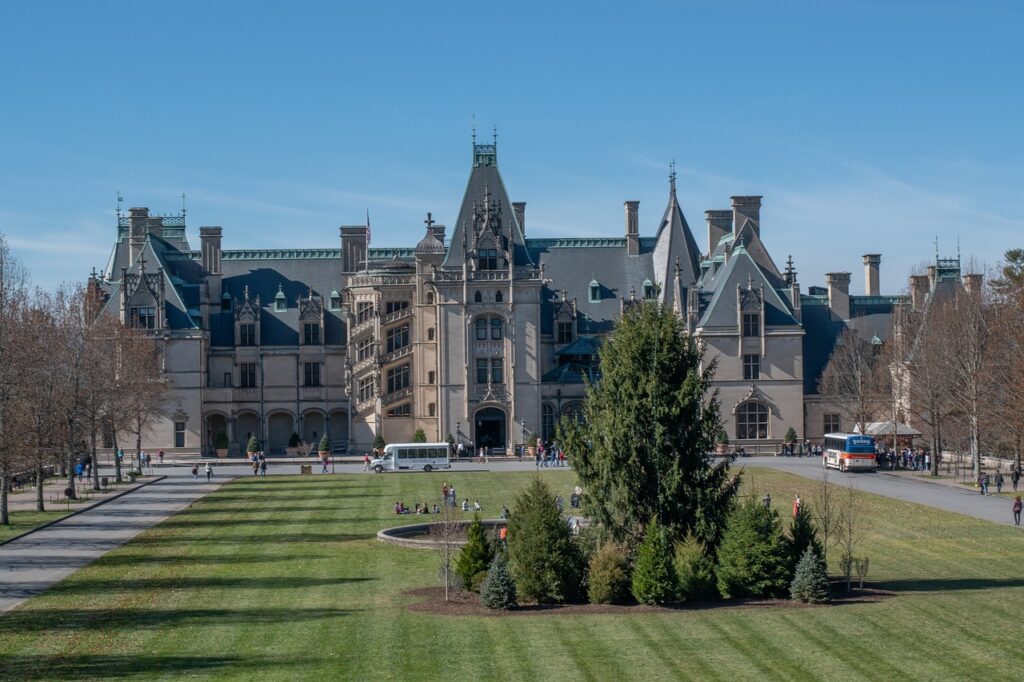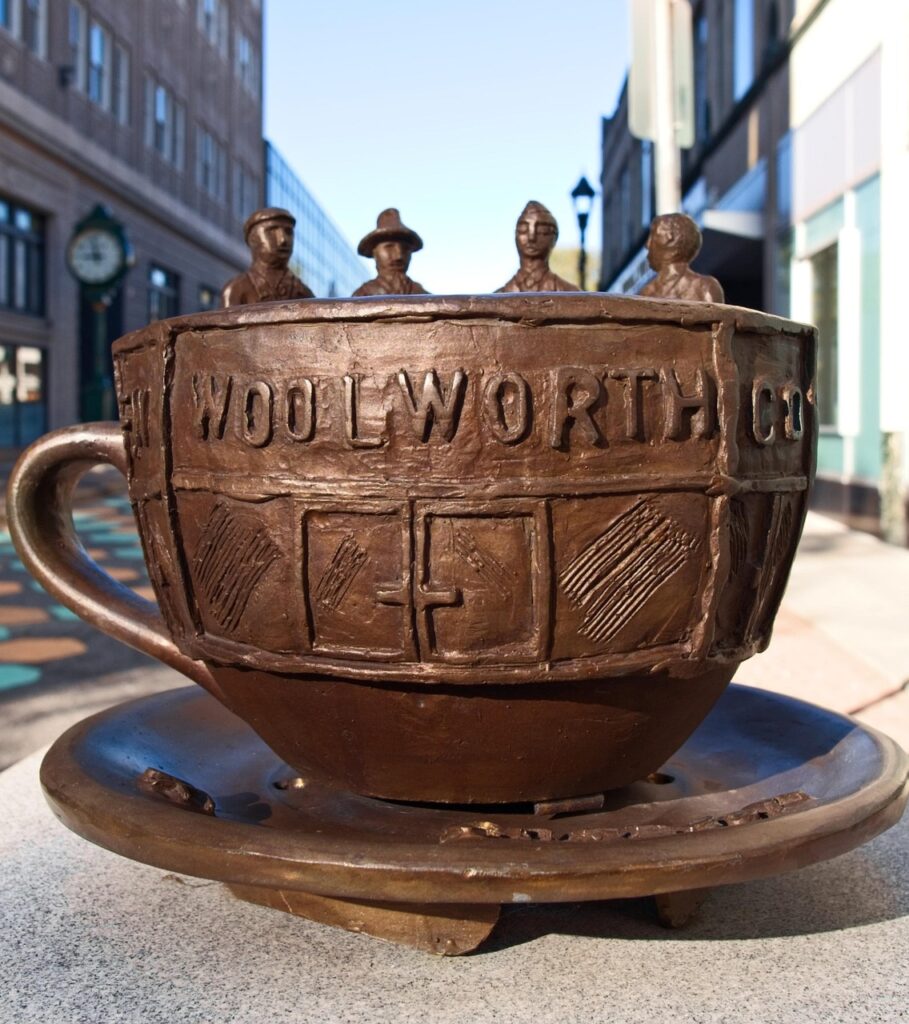
The landscape of American history is punctuated by moments when the courage of a few ignites a movement that reshapes the nation. Such a moment occurred 65 years ago in Greensboro, North Carolina, a pivotal event sparked by the steadfast conviction of four college freshmen. Joseph McNeil, who has now passed away at the age of 83, was one of these brave young men, a figure whose quiet act of defiance against racial segregation profoundly altered the course of the Civil Rights Movement. His passing marks the end of an extraordinary life, one that began under the strictures of Jim Crow and blossomed into a powerful testament to the transformative potential of nonviolent protest.
McNeil’s life, a tapestry woven with personal experience, strategic thought, and unwavering commitment, offers a vital lens through which to understand a critical period in America. He was not merely a participant but a catalyst, a young spark who helped fan the flames of justice into a nationwide conflagration. The impact of his actions, alongside his three classmates, continues to resonate today, inspiring new generations to confront injustice and champion equality. This account aims to delve into the seminal contributions of Joseph McNeil and the Greensboro Four, exploring the genesis of their protest, its immediate ripple effects, and the profound legacy that endures.
The story of the Greensboro sit-ins is a powerful narrative of how ordinary individuals, armed with extraordinary courage, can challenge deeply entrenched systems of oppression. It is a story not just of historical events, but of the human spirit’s capacity to demand dignity and fundamental rights in the face of widespread discrimination. Joseph McNeil’s journey, from a young man experiencing the indignities of segregation to a two-star general and civil rights icon, encapsulates the very essence of American progress and the ongoing struggle for a more just society.

1. **The Genesis of a Movement: Joseph McNeil’s Inspiration**Joseph McNeil’s decision to act was not a sudden impulse but the culmination of years of lived experience under Jim Crow laws and a particularly poignant incident that served as a “final blow of humiliation.” Born on March 25, 1942, in Wilmington, North Carolina, he grew up in a society where racial segregation was a daily reality, deeply embedded in social norms and legal structures across the Deep South. His early life was marked by the pervasive system that dictated where Black citizens could eat, drink, and even sit.
A pivotal moment occurred during McNeil’s bus trip back to North Carolina A&T from New York after winter break in 1960. He recalled in a 2014 interview with WUNC FM, “They said, ‘We can’t serve you here – you have to go around the corner there.’ And for me, that was the final blow of humiliation. And I had had enough. And I made up my mind that I had to do something.” This personal affront, a stark reminder of the racial barriers that tightened their grip the further south he traveled, ignited a resolve within him to challenge the system directly.
McNeil’s exposure to the relatively integrated North, where his father had relocated the family for an electrical company job, made the segregation he faced in the South even more difficult to bear. This contrast sharpened his awareness of the injustice and fueled his determination. The denial of service at a bus station lunch counter in Richmond, Virginia, crystallized his frustration, becoming, as the context notes, “one of the many straws on the camel’s back” that propelled him toward activism. It was this deeply personal experience that laid the groundwork for the historic protest to come.
2. **The A&T Four: A Cohort of Conviction**Upon his return to North Carolina A&T State University in Greensboro, Joseph McNeil found fertile ground for his burgeoning activism among his peers. He lived on the same dormitory floor as Franklin McCain, David Richmond, and Ezell Blair Jr. (later known as Jibreel Khazan), forming a tight-knit group that shared a common anger and frustration with the oppressive anti-Black laws and social norms they encountered daily. Their shared experiences and indignation bonded them, transforming individual grievances into a collective resolve to push back against the prevailing system of segregation.
These young Black men, all freshmen at North Carolina A&T State University, collectively became known as the “A&T Four” or the “Greensboro Four.” They were teenagers when they launched the sit-in, McNeil himself being just 17. The dormitory became their crucible, a place where McNeil’s idea of doing something concrete to challenge racial injustice found receptive ears and equally determined hearts among his roommates and floor mates. Together, they channeled their anger into a strategic plan for action.
McNeil’s roommate, Khazan, remembered him as an intellectually gifted student with a photographic memory, whose conversations often centered on ideals rather than material concerns. McNeil quoted Shakespeare and Aristotle, possessing an impeccable fashion sense, qualities that belied the conventional image of a young activist but underscored his thoughtful and principled approach. It was this unique combination of intellect, conviction, and shared purpose among the four friends that would lead to one of the most significant acts of civil disobedience in American history.

3. **Meticulous Planning: A Strategy for Nonviolence**The iconic sit-in on February 1, 1960, was far from a spontaneous outburst; it was a meticulously planned act of nonviolent direct action, strategically conceived by Joseph McNeil and his three classmates. McNeil’s background in the Reserve Officer Training Corps (ROTC) at A&T proved instrumental in informing his idea of how to mobilize group action around a clear goal. This training in discipline and strategic thinking provided a framework for their nascent protest.
McNeil was also a strong believer in the principle that the Civil Rights movement could only achieve its goals through a nonviolent approach, a conviction that included a spiritual dimension. He frequently engaged in discussions with Ralph Johns, a local member of the NAACP, seeking guidance and sharing his ideas about organizing a sit-in. This collaboration with an established civil rights leader underscored the seriousness and foresight behind their endeavor, linking their youthful idealism to the broader, ongoing struggle.
The first-day effort was carefully orchestrated. Before taking their seats at the lunch counter, the students made sure to purchase school supplies and toiletries from other sections of the Woolworth’s store. They deliberately kept their receipts, a strategic move designed to demonstrate that the lunch counter was the only portion of the store where racial segregation still prevailed, thus highlighting the arbitrary and discriminatory nature of the policy they sought to challenge. This methodical approach underscored their commitment and helped to articulate their protest’s specific aim.

4. **February 1, 1960: The Initial Bold Stand**On the afternoon of Monday, February 1, 1960, the four young men—Joseph McNeil, Franklin McCain, David Richmond, and Ezell Blair Jr.—walked downtown to the F.W. Woolworth’s store in Greensboro. After purchasing items from the general merchandise sections, they proceeded to the store’s “whites-only” lunch counter and took their seats, an act that defied decades of deeply entrenched racial segregation. This simple yet profound action marked the beginning of a movement that would reverberate across the nation.
Once seated, they asked to be served coffee. The staff, described as “shocked that anyone would challenge their approach to only serving Black patrons at a window at the back of the store,” flatly refused to take their orders. Despite being denied service and urged by the store manager and police to move on, the young Black men declined to give up their seats. Their steadfast refusal to leave, even as a police officer intimidated them by drumming his nightstick, became a powerful symbol of their unwavering commitment to equality.
The students remained in their seats, resolute in their peaceful protest, until the store closed its doors for the day. “What we did, we thought was the right thing to do to clear up a wrong,” McNeil later explained, reflecting on the moral imperative that drove their actions. Their quiet defiance at the counter, a space denied to them solely because of their race, captured the essence of the injustice of Jim Crow and set the stage for a nationwide awakening against segregation.
5. **A Rapid Swell of Support: The Movement Takes Hold**The immediate aftermath of the initial sit-in demonstrated the profound resonance of the A&T Four’s courageous act. As word of their defiance spread quickly across the North Carolina A&T campus, it galvanized students and community members alike. The next day, February 2, 1960, the four original protesters returned to Woolworth’s, this time accompanied by 20 other students, signaling an immediate and significant escalation of the demonstration.
The momentum continued to build with remarkable speed. On the third day, the number of fellow protesters swelled to 60, further occupying the lunch counter and the surrounding area. By the fifth day, the protest had grown exponentially, with at least 1,000 individuals participating, transforming the store and its vicinity into a vibrant hub of peaceful resistance. This rapid growth underscored the deep-seated frustration and readiness for action within the Black community and among sympathetic allies.
The context notes that McNeil’s ROTC training became significant as the protest grew and expanded to additional restaurants across town. Along with students from A&T, Bennett College, Dudley High School, and the University of North Carolina Greensboro, McNeil and his classmates managed to keep the Woolworth’s protest going while coordinating activity at multiple locations. This feat was particularly impressive in an era long before the advent of cell phones, text messages, or email, showcasing their exceptional organizational skills and the widespread commitment of the student body.

6. **The Nationwide Ripple: Sit-ins Across the South**The impact of the Greensboro sit-in quickly transcended the boundaries of North Carolina, sending a powerful ripple effect across the segregated South. Within weeks of the initial protest at Woolworth’s, similar sit-ins were launched in more than 50 cities across nine states. This explosion of coordinated nonviolent direct action demonstrated the profound catalytic effect of the A&T Four’s example, inspiring thousands of young people to challenge racial discrimination in their own communities.
By the end of February 1960, students from two dozen colleges across eight Southern states were actively demanding equal service. Within two months, sit-ins had spread to 54 cities, engaging more than 50,000 young people in peaceful protests. This widespread mobilization of youth, often at great personal risk, marked a new and dynamic phase in the Civil Rights Movement, characterized by direct action and a refusal to wait for change.
The Greensboro sit-in proved to be the catalyst that civil rights leaders had long sought, breathing new life into the struggle for racial equality. As historian David Garrow noted, while Martin Luther King Jr. struggled to build a nationwide movement after the 1955 Montgomery bus boycott, “those four guys on Feb. 1 really do set the Southern Black freedom struggle of the 1960s.” Their courageous act provided a model and an impetus for an entire generation to take a stand against injustice, effectively broadening the scope and intensity of the movement.

7. **The Catalytic Impact: Setting the Stage for SNCC**Beyond inspiring a wave of direct action, the Greensboro sit-in had another profound organizational impact: it directly led to the formation of the Student Nonviolent Coordinating Committee (SNCC). This pivotal organization emerged from a student meeting held in Raleigh, North Carolina, shortly after the initial sit-ins, solidifying the student-led approach that would become a hallmark of the Civil Rights Movement. SNCC quickly became a key part of the student direct-action civil rights movement, providing a coordinated framework for young activists across the South.
SNCC played an instrumental role in organizing various campaigns, including the Freedom Rides and voter registration drives, which were crucial in building momentum toward legislative change. The committee’s emphasis on grassroots organizing and empowering local communities fostered a new generation of leaders who were deeply committed to nonviolent resistance. The emergence of SNCC demonstrated the sit-in movement’s capacity to not only inspire individual acts of courage but also to create lasting organizational structures for sustained activism.
The formation of SNCC underscored the idea, as Chancellor James Martin of North Carolina A&T stated, that McNeil and his classmates “inspired a nation with their courageous, peaceful protest, powerfully embodying the idea that young people could change the world.” The committee gave a voice and a platform to countless students, enabling them to collectively push for civil rights with unprecedented vigor and strategic unity. This organizational legacy remains a testament to the profound and far-reaching impact of the Greensboro sit-ins and the vision of its founders, including Joseph McNeil.
The reverberations of the Greensboro sit-ins extended far beyond the initial act of protest, blossoming into a transformative force that redefined American jurisprudence and societal norms. Joseph McNeil’s unwavering commitment to justice at the Woolworth’s lunch counter did not merely challenge segregation; it helped to dismantle it, paving the way for landmark legislative victories and inspiring generations. His life, a testament to the power of conviction, continued to exemplify service and dedication, evolving from a young activist to a distinguished military leader and a revered icon whose legacy is now etched into the fabric of the nation.

8. **Legislative Milestones: The Civil Rights and Voting Rights Acts**The courageous stand taken by Joseph McNeil and his fellow students in Greensboro created an undeniable momentum that resonated through the corridors of American power, ultimately leading to profound legislative changes. The widespread, sustained student-led demonstrations between 1960 and 1965 played an instrumental role in shaping the political climate and public consciousness necessary for federal action. These protests brought the stark realities of segregation into national focus, demanding a governmental response to systemic injustice.
The direct-action campaigns, ignited by the Greensboro sit-ins and amplified by subsequent efforts such as the Freedom Rides and voter registration drives organized by groups like SNCC, exerted immense pressure on the United States Congress. This groundswell of activism underscored the urgent need for comprehensive civil rights legislation. The sheer scale and moral clarity of the movement made it increasingly difficult for policymakers to ignore the demands for equality.
This sustained pressure culminated in the passage of the landmark 1964 Civil Rights Act. This sweeping legislation mandated the desegregation of public accommodations, including lunch counters, hotels, and theaters, and included robust protections against discrimination in such spaces. It was a direct response to the very injustices the A&T Four had challenged, transforming local acts of defiance into national law.
Further building on this foundation, the 1965 Voting Rights Act was also passed, protecting the constitutional right to vote for all Americans, particularly African Americans who had been systematically disenfranchised. Together, these two legislative achievements fundamentally reshaped the legal landscape of the nation, illustrating the profound and enduring impact of the sit-in movement that Joseph McNeil helped to initiate.
9. **Desegregation Achieved: The Woolworth’s Victory and Beyond**The immediate objective of the Greensboro sit-in, the desegregation of the Woolworth’s lunch counter, was achieved within a remarkably short period. On July 25, 1960, just six months after the initial protest, Woolworth’s finally served Black patrons at its Greensboro location. This victory was a tangible triumph for the student movement, demonstrating that persistent nonviolent action could indeed dismantle entrenched discriminatory practices.
This initial success in Greensboro quickly became a blueprint for change, influencing policies at most Woolworth’s stores throughout the South. The chain, recognizing the economic and social pressures, began to alter its service policies, signaling a broader shift in corporate behavior in response to the civil rights movement. The desegregation of these public spaces, once bastions of racial exclusion, began to chip away at the psychological and physical barriers of Jim Crow.
The desegregation of the Greensboro Woolworth’s was not merely an isolated incident; it was a powerful symbol that inspired similar actions across the country. It proved that organized, nonviolent resistance could force change, providing a concrete example of success that motivated activists in other cities and states to push for the desegregation of their own local establishments. This cascaded into a widespread dismantling of segregation across various public accommodations.
While the 1964 Civil Rights Act later provided the federal mandate for desegregation, the Woolworth’s victory served as an early and crucial demonstration of the power of direct action. It showed that the fight for dignity and equal service could be won, laying vital groundwork for the legal and social transformations that would follow and forever altering the fabric of American society.
10. **A Life of Service: Military Career and Public Duty**Joseph McNeil’s dedication to service extended far beyond his pivotal role in the Civil Rights Movement, encompassing a distinguished career in the United States Air Force and subsequent public duty. After graduating from North Carolina A&T in 1963 with a degree in engineering physics, McNeil immediately answered another call to duty, joining the Air Force. His commitment to the nation was evident as he served six years as a navigator on KC-135 aerial refueling planes during the Vietnam War.
His military career did not end with his active service. McNeil continued to serve his country in the Air Force Reserve for over two decades, demonstrating an enduring commitment that led to significant advancement. His leadership capabilities and dedication were formally recognized through his promotions.
Ultimately, Joseph McNeil retired from the Air Force Reserve in 2000, having achieved the impressive rank of two-star major general. This accomplishment speaks volumes about his character, discipline, and strategic acumen, qualities that were undoubtedly honed during his ROTC training at A&T and were also evident in his meticulous planning of the sit-ins.
Beyond his military achievements, McNeil also dedicated his professional skills to federal administration. He worked for the Federal Aviation Administration (FAA), where he oversaw flight standards for several regions. This diverse career path underscores a life consistently marked by public service and a commitment to excellence, whether in the skies or in the struggle for civil rights.
Read more about: Tran Trong Duyet: Unpacking the Complex Legacy of John McCain’s Captor at the ‘Hanoi Hilton’ and His Journey Towards Reconciliation

11. **Beyond the Uniform: Investment Banking and Civic Honor**Joseph McNeil’s professional life after his military service continued to demonstrate a versatile intellect and an enduring commitment to community. Following his distinguished career in the Air Force Reserves, where he retired as a two-star major general in 2001, McNeil transitioned into the demanding world of investment banking. This move highlighted his intellectual breadth and capacity for complex financial strategy, showcasing a man who excelled in diverse and challenging fields.
Even as he pursued a career in finance, McNeil remained deeply connected to his roots and the legacy he helped forge. His home state of North Carolina, particularly his hometown of Wilmington, bestowed significant civic honors upon him. These tributes served as tangible reminders of the profound impact he had on the nation’s history.
In Wilmington, Joseph McNeil is celebrated with a historical marker, a permanent acknowledgment of his contributions to civil rights. Furthermore, a portion of Third Street in his hometown has been commemoratively named Maj. Gen. Joseph McNeil Way in his honor, ensuring that his name and bravery remain a visible part of the community he came from. These acts of recognition underscore the lasting pride and respect his actions continue to command.
While stationed in South Dakota during his military career, Joseph McNeil married Ina Brown, a quilt maker of Lakota descent. The couple later settled in Hempstead, New York, on Long Island. This personal dimension of his life further illustrates the rich tapestry of experiences that defined this remarkable figure, bridging different cultures and contributing to various communities throughout his journey.

12. **Enduring Legacy: Museums, Monuments, and Inspiration**The legacy of Joseph McNeil and the A&T Four is not confined to history books; it is vibrantly preserved through a network of museums, monuments, and educational initiatives that ensure their bravery continues to inspire. A significant monument to the four men proudly stands on the North Carolina A&T campus, a daily reminder to students of the power of courage and conviction that emanated from their own university.
Perhaps the most poignant of these memorials is the International Civil Rights Center & Museum, which opened in 2010 on the very site of the old Woolworth’s store in downtown Greensboro. This museum serves as a living testament to the sit-ins, allowing visitors to stand where history was made. A section of the original lunch counter remains intact within the museum, offering a powerful, tactile connection to that pivotal moment.
The historical significance of the Greensboro lunch counter is so profound that another portion of it is preserved at the Smithsonian Institution’s National Museum of American History. This national recognition underscores the sit-in’s place as a cornerstone event in the broader American narrative of civil rights and social change. Even recently, Then-Vice President Kamala Harris sat at a section of the lunch counter within the museum in 2021, symbolizing the enduring relevance of the event.
Beyond physical markers, McNeil and his fellow protesters received numerous accolades, including the James Smithson Bicentennial Medal from the Smithsonian Institution in 2010. These honors, alongside the various educational programs and continuing recognition, ensure that the story of the Greensboro sit-ins remains a potent source of inspiration, teaching new generations about the transformative power of peaceful protest and the fight for equity and social justice.

13. **The Philosophy of Choice: McNeil’s Deeper Meaning**Years after the initial sit-in, Joseph McNeil offered profound reflections on the true essence of their actions, revealing a philosophical depth that went far beyond merely securing a cup of coffee. He explained in 2014 that the sit-in was not simply about “David Richmond, Frank McCain, Ezell Blair or Joe McNeil sitting down and having a cup of coffee next to a white person.” His words underscored a much broader and more fundamental struggle.
For McNeil, the core principle was “choice.” It was about the inherent human dignity of having the autonomy to decide, unhindered by the arbitrary constraints of racial discrimination. He articulated this with powerful clarity: “It was about having the ability to say, ‘I choose to sit down.’ Or, ‘I choose to drink from that water fountain.’” This was not a plea for integration as an end in itself, but for the basic freedom to exercise personal liberty.
His philosophy extended to a rejection of the racialized divisions imposed by society. “I don’t choose Black water or white water or colored water. I want water,” he asserted. This statement perfectly encapsulated the absurdity of segregation and highlighted the universal desire for simple, unencumbered access to public amenities, irrespective of race. It was a demand for human rights, rather than merely for specific services.
McNeil’s perspective offers a timeless lesson, emphasizing that the fight against segregation was ultimately a battle for fundamental human dignity and the freedom of individual choice. His words reveal the intellectual and moral fortitude that underpinned the student movement, framing their defiance not just as a protest against a specific injustice, but as an assertion of universal human rights and self-determination.

14. **A Lasting Testament: Passing the Torch of Courage**Joseph McNeil, a young spark who ignited a nationwide civil rights battle, passed away at the age of 83 in Port Jefferson, New York, on Thursday. His death, confirmed by his wife Ina McNeil as being due to Parkinson’s disease, marks the quiet conclusion of a life lived with extraordinary purpose and courage. While statements from North Carolina A&T and the family did not initially specify his cause of death, his peaceful passing underscores the enduring human element of a historical movement.
McNeil’s passing leaves Jibreel Khazan—formerly Ezell Blair Jr.—as the sole surviving member of the original Greensboro Four, with Franklin McCain having died in 2014 and David Richmond in 1990. Despite recent health challenges, McNeil demonstrated his unwavering commitment to his legacy by attending the sit-in’s 65th anniversary observance in Greensboro this year, a poignant testament to his dedication.
His son, Joseph McNeil Jr., eloquently captured the essence of his father’s enduring impact, stating, “Joseph A. McNeil’s legacy is a testament to the power of courage and conviction. His impact on the civil rights movement and his service to the nation will never be forgotten.” This sentiment reflects not only personal pride but also a broader understanding of McNeil’s place in American history, ensuring that the torch of his courageous spirit will continue to be carried forward by his family and by all who remember his actions.
As museum co-founder Earl Jones observed, McNeil and the sit-in participants “leave a legacy of non-violent protests that promote equity and social justice and social change in America and throughout the world.” His life stands as a powerful reminder that ordinary individuals, driven by conviction and a commitment to peace, can fundamentally alter the course of history, inspiring generations to come to confront injustice with the same resolve and moral clarity.
Joseph McNeil’s journey, from a resolute young man at a segregated lunch counter to a decorated general and revered civil rights icon, encapsulates the very best of the American spirit—a tireless pursuit of justice, equality, and dignity for all. His quiet yet seismic act of defiance in 1960 reverberated through the decades, dismantling systemic barriers and proving that profound change can indeed begin with a single, courageous choice. As we reflect on his remarkable life and enduring legacy, we are reminded that the fight for a more equitable society is a continuous one, forever illuminated by the sparks ignited by figures like Joseph McNeil. His story is not just history; it is a timeless call to conscience, urging us all to find our own ways to stand up for what is right, to demand choice, and to pursue justice with unwavering conviction. His impact on the civil rights movement and his service to the nation will indeed never be forgotten.







